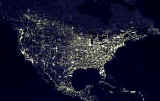 |
nightwise.orgFor Kids! |
|
Three
Sources of Light Pollution asks "What's the Problem?",
"Why Should I Care?", and "What Can I Do?"
 projects.htm
projects.htm
Projects page lists lots of demonstrations, activities, projects, and
science fair ideas for kids, including the highlights below:
| Let There Be Night will create a planetarium program and a school district-wide experiment to assess a community's sky glow during IYA2009. With a contribution from Toyota and other supporters, the experiment parallels the Globe at Night initiative. The planetarium program will be distributed to facilities across the country, while the students will assess sky glow from within the school district boundaries. | |
 |
Globe at Night is a worldwide campaign to observe and record the magnitude of visible stars as a means of measuring light pollution in a given location. The next star count is March 16-28, 2009. |
 |
Simple paper plate demonstrations by an 8 year-old convey both the impact of glare and the benefits of shielding lights. |
| For a science project named Sorry Starry Night, a student measured the sky glow from seven sites adjacent to a new retail development. | |
| For the Night Vision program, families and teams use hand-held Sky Quality Meters (SQMs) to measure the the amount of light reflected back down to earth from multiple sites. | |
| Two students measure sky glow in their community, then share results with their classmates in a portable planetarium. | |
| List of ideas for student presentations to the public helps jump-start student projects. | |
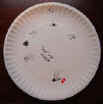 |
Extended list of ideas for student projects or academic fairs, with specific reference to issues in northern Indiana. |
| rockland.htm Students of the Applied Democracy class at Watershed Community School in Rockland, Maine used an SQM and a handheld GPS to map sky glow in their town. |
|

|
Your stuff could be here! Please send your ideas, links, and content to bueter"AT"nightwise.org. |
 http://www.sciencenewsforkids.org/articles/20071205/Feature1.asp
http://www.sciencenewsforkids.org/articles/20071205/Feature1.asp
Science News for Kids features a story about outdoor lighting issues and
provides supporting activities, links, and questions.
 http://www.astrosociety.org/education/publications/tnl/74/74.html
http://www.astrosociety.org/education/publications/tnl/74/74.html
A Silent Cry for Dark Skies from the Universe in the Classroom series
(No. 74-Winter 2008) presents examples of how the natural world is impacted by
excessive outdoor lights. See also Light Pollution – Universe in
the Classroom No. 44, Fall 1998, at
http://www.astrosociety.org/education/publications/tnl/44/lightpoll.html.
 Lights Out
America encourages everyone to turn off outdoor lights for one hour
on Saturday, March 29, 2008, from 8:00 p.m. to 9:00 p.m. to promote energy
conservation.
Lights Out
America encourages everyone to turn off outdoor lights for one hour
on Saturday, March 29, 2008, from 8:00 p.m. to 9:00 p.m. to promote energy
conservation.
 chain
chain
Energy chain illustrates
how only about 1% of initial energy extracted from earth makes its way to roadway
reflection.
 http://www.youtube.com/watch?v=1ejcZsLEtEQ
http://www.youtube.com/watch?v=1ejcZsLEtEQ
Local Light Pollution (in Riverside)
video on YouTube combines outdoor lighting images with narration by kids.
Several more videos are listed at videos.htm.
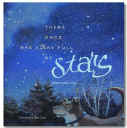 http://www.bobcrelin.com/author.html
http://www.bobcrelin.com/author.html
There Once Was a Sky Full of Stars, a children's book by Bob Crelin,
"offers hope and encouragement by describing simple things we can all do to
help bring back the stars." Available from Sky
Publishing.
 http://darkskycamping.googlepages.com/
http://darkskycamping.googlepages.com/
Best practices in illumination for the Boy Scouts; dark sky camping and the
impact of light pollution on scout camps.
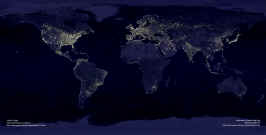 http://antwrp.gsfc.nasa.gov/apod/ap001127.html
http://antwrp.gsfc.nasa.gov/apod/ap001127.html
The earth seen at night shows vast amounts of wasted lighting lost to space.
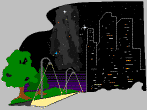 http://www.darksky.org/
http://www.darksky.org/
The International Dark-Sky Association (IDA) thoroughly
addresses lighting issues. There's a lot of material at this website (and
it's being renovated), but if you hunt around you'll find good stuff for kids.
- http://www.darksky.org/programs/george-and-edythe-taylor-student-award.php
George and Edythe Taylor Student Award "encourages students to explore the worldwide problem of light pollution through science, technology, society, and the environment." - http://www.darksky.org/programs/educational-outreach/educational-resources/student-awards.php
Student contests. - http://www.darksky.org/programs/educational-outreach/educational-resources/index.php#
Educational resources.
www.nctimes.com/articles/2005/04/10/news/columnists/skies_above/15_07_544_9_05.txt
Third-grader offers safe advice about curbing light pollution.
KidArt
Students draw their interpretation of Orion and write an accompanying story.
 http://www.lettherebenight.com/turtles.html
http://www.lettherebenight.com/turtles.html
Turtle Hatch Activity is a dynamic demonstration of how the presence of light
pollution affects sea turtle hatchlings. This activity works well with a
large group of kids.
 http://britastro.org/dark-skies/education.html?2O
http://britastro.org/dark-skies/education.html?2O
Pupil dilation experiments demonstrate the effects of light pollution; from
the Campaign for Dark Skies.
